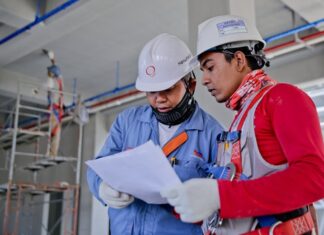Recognizing employees has become an important part of modern business culture, as research suggests employee loyalty helps reduce turnover. Managers can no longer just expect workers to produce like machines. The human element has entered the equation as managers now must convince talent to enjoy their work, which can help boost performance skills. This basic guide to employee recognition will help create a more supportive workplace environment.
Manager-driven Recognition
Table of Contents
It’s crucial for management to maintain a productive staff that follows company direction. When workers are treated like statistics they often tend to seek other opportunities. A business can drain resources if it’s constantly hiring and training new employees. The ideal business efficiency scenario is to develop a competent team that is proud to work for the company and evolves with changes that affect the industry. By showing appreciation for the labor and reducing turnover, a company can save money and build a strong team.
Coworker-Driven Recognition
Creating a team atmosphere that allows for coworker interaction is a healthy and common business concept. In order for team members to feel welcome to participate, company policies should be established that allow for brainstorming sessions. Part of brainstorming is the notion that all ideas collected at meetings are open for discussion and not immediately discarded. These sessions reinforce a collaborative environment that allows each player to have input. This is easy to facilitate when using employee recognition software.
Client-Driven Recognition
A client-driven recognition system allows a company to collect client feedback, which can reward employees for nurturing valuable business relationships. In many ways, online customer reviews have become the new standard that rates business performance. So sales reps can be rewarded for the number of clients they serve and the degree to which they maintain accounts. Allowing clients to evaluate, choose and recommend certain employees is another way to create a client-driven rewards system.
How to Deliver Incentives and Build Employee Loyalty
Evidence shows that employers are more likely to retain a talent pool if they provide incentives and rewards for performance and loyalty. Successful programs help drive increased profits. Researcher Deloitte has found from studies that companies with effective employee recognition programs have 31 percent less turnover than those lacking such programs. Other research shows that customer service dramatically impacts customer ratings.
Incentives can include bonus pay, prizes such as vacations, and a more flexible work schedule. Even as simple as giving a customized business birthday card during their birthday works too. Other incentives may revolve around future career advancement. Giving employees the opportunity to climb a career ladder is essential to attract long-term employees. Rewarding them for loyal behavior or bringing new leads to the company can go far in helping employees develop enthusiasm about their jobs.
Different forms of employee recognition are now being embraced by companies with a focus on wellness as part of the workplace. Maintaining a positive team atmosphere is a huge challenge, but can be achieved by managers treating each employee on a personalized level. Recognition of accomplishments and team input help create a trusting environment for workers. Reducing turnover and building employee loyalty are now two important pillars in aiming for business sustainability.










